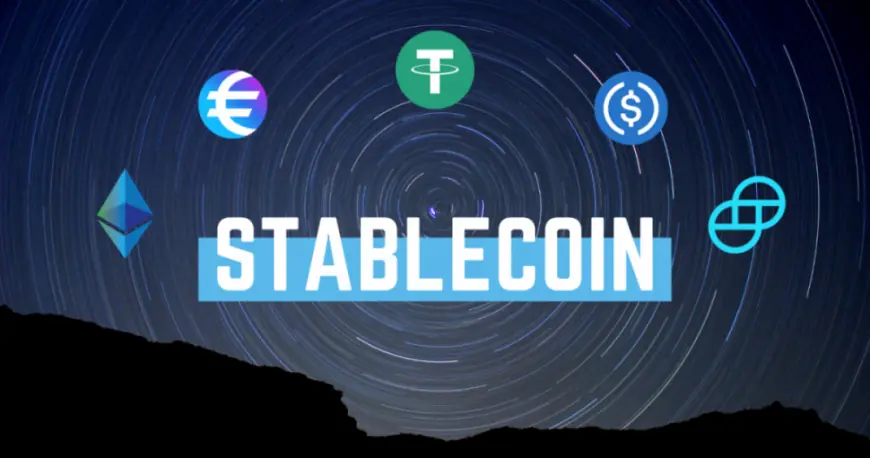How Will Stablecoin Development Impact Monetary Sovereignty in 2025?

In 2025, the evolution of stablecoin development promises significant implications for global monetary sovereignty. These digital currencies, pegged to stable assets like fiat currencies or commodities, challenge traditional financial systems by offering decentralized alternatives for transactions and savings. As stablecoins gain traction, they could potentially reduce reliance on central banks and national currencies, thereby reshaping how monetary policies are enacted and enforced worldwide.

The rise of stablecoins might also introduce new regulatory challenges and geopolitical dynamics as countries navigate their roles in this evolving financial landscape. Moreover, the widespread adoption of stablecoins could democratize access to financial services, particularly in regions with unstable currencies or limited banking infrastructure, fostering greater financial inclusion globally. Thus, as stablecoin technologies mature and their usage expands, their impact on monetary sovereignty and the broader economic order is poised to be transformative in the coming years.
What is Stablecoin Development?
Stablecoin development refers to the creation and evolution of digital currencies designed to minimize price volatility by pegging their value to stable assets such as fiat currencies (like the US dollar), commodities, or other cryptocurrencies. Unlike volatile cryptocurrencies such as Bitcoin or Ethereum, stablecoins aim to maintain a stable value to facilitate everyday transactions and store of value.
This stability is typically achieved through various mechanisms such as collateralization, where the stablecoin is backed by reserves of the pegged asset, algorithmic mechanisms that adjust supply based on demand, or a combination of both.
Stablecoins have gained attention for their potential to provide a reliable medium of exchange and store of value in the digital economy, offering benefits like fast cross-border transactions and accessibility to financial services in regions with volatile or restricted currencies. As the technology matures, stablecoin development continues to innovate, attracting interest from financial institutions, regulators, and users seeking stability in digital assets.
Understanding Monetary Sovereignty
Monetary sovereignty refers to a nation’s ability to exercise control over its currency and monetary policies independently. It encompasses the authority to issue currency, determine exchange rates, and manage monetary supply and interest rates. This sovereignty allows countries to pursue economic goals such as price stability, economic growth, and employment without external constraints. However, global economic interconnectedness and the rise of digital currencies like stablecoins present challenges to traditional notions of monetary sovereignty, influencing how countries navigate economic policies in a digital, interconnected world.
Impact on Monetary Policy
The development of stablecoins can significantly impact monetary sovereignty in several ways, particularly through 2025 and beyond. Here are some key considerations:
Monetary Policy Efficacy:
- Transmission Mechanism: Traditional central banks use tools like interest rates and reserve requirements to influence economic activity. If stablecoins are widely adopted, people and businesses might reduce their reliance on traditional banking systems. This could weaken the transmission mechanism of monetary policy.
- Currency Stability: Stablecoins pegged to fiat currencies might maintain value stability, but if they are widely used, their proliferation could create parallel monetary systems. This might limit central banks’ control over the money supply and, consequently, inflation and economic stability.
Financial Stability:
- Bank Runs and Deposit Flight: In times of economic uncertainty, people might convert their bank deposits into stablecoins seeking stability. This could increase the risk of bank runs, potentially destabilizing financial systems.
- Regulation and Supervision: Stablecoins often fall outside traditional financial regulations. The growth and widespread adoption of stablecoins might necessitate new regulatory frameworks to ensure financial stability and protect consumers.
Sovereignty Concerns:
- Foreign Currencies and Digitalization: If stablecoins pegged to foreign currencies (like USD-pegged stablecoins) become dominant in certain countries, those countries might lose control over their monetary policy to the issuers of these stablecoins.
- Fiscal Policy Interactions: The rise of stablecoins could complicate fiscal policy implementations. For instance, governments might find it harder to implement capital controls or track financial flows if stablecoins facilitate easy cross-border transactions.
Central Bank Digital Currencies (CBDCs):
- Competition and Collaboration: Central banks across the globe are exploring CBDCs to counterbalance the influence of private stablecoins. In 2025, the coexistence and potential competition between CBDCs and private stablecoins could shape the monetary landscape.
- Innovation and Adoption: The development of stablecoins might spur central banks to innovate and adopt new technologies. This can lead to a more resilient and efficient financial system if managed properly.
Privacy and Security:
- Data Protection: Stablecoins could lead to privacy concerns, as transactions might be more traceable than traditional cash transactions. This might influence how people view and use different forms of currency.
- Cybersecurity Risks: The digital nature of stablecoins introduces cybersecurity risks. Central banks and financial institutions would need to enhance their security frameworks to protect against potential cyber-attacks.
Global Economic Dynamics:
- Cross-Border Transactions: Stablecoins can facilitate faster and cheaper cross-border transactions, potentially altering international trade and investment dynamics. This can impact how monetary policy affects the global economy.
- Interoperability and Standardization: There might be a push towards creating standardized protocols and interoperability between different stablecoins and traditional financial systems.
The development of stablecoins poses both challenges and opportunities for monetary sovereignty. While they offer technological advancements and efficiencies, they also threaten to undermine central banks’ control over national currencies and the efficacy of monetary policies. Central banks will need to adapt, regulate, and perhaps innovate through CBDCs to maintain their influence and ensure economic stability. By 2025, these dynamics will likely be more pronounced, making it a critical year for policymakers to address these concerns.
What Are The Benefits Of Stablecoins For Monetary Sovereignty?
Stablecoins, while posing challenges, can offer some surprising benefits for monetary sovereignty:
- Efficiency in Cross-Border Transactions: Stablecoins can streamline international payments. Their fast settlement times and potentially lower fees compared to traditional systems could reduce costs for governments and businesses, potentially boosting trade. This could strengthen a nation’s economic position in the global market.
- Reduced Cash Dependency: Widespread stablecoin adoption could decrease reliance on physical cash, a challenge for governments to manage and distribute. This could lead to cost savings and potentially allow for more efficient monetary policy implementation.
- Greater Transparency: Some stablecoins, particularly those backed by real assets, can introduce more transparency into financial systems. This could potentially help governments identify and combat illegal activities like money laundering.
- Innovation and Competition: Stablecoins can push central banks to innovate and improve their own offerings, like CBDCs. This healthy competition could lead to more efficient and user-friendly financial systems, ultimately benefiting citizens.
It’s important to remember that these are potential benefits, and their actual impact depends on how stablecoins are developed and regulated. However, they highlight that stablecoins aren’t inherently detrimental to monetary sovereignty. They can present opportunities for governments to adapt and potentially strengthen their control over financial systems.
How Can Countries Regulate Stablecoins To Protect Monetary Sovereignty?
Countries can implement a number of regulatory approaches to stablecoins to mitigate risks and protect monetary sovereignty:
- Licensing and KYC/AML Requirements: Issuing licenses to stablecoin issuers brings them within the regulatory framework. This ensures responsible actors are involved and enforces compliance with anti-money laundering (AML) and Know Your Customer (KYC) regulations. This combats financial crime and protects consumers.
- Capital Adequacy Standards: Mandating minimum capital requirements for stablecoin issuers ensures they have sufficient reserves to maintain the peg to the underlying asset. This reduces the risk of the stablecoin losing its value, protecting both consumers and financial stability.
- Reserve Requirements: Requiring stablecoin issuers to hold reserves in highly liquid assets, like government bonds, strengthens the peg. These reserves can be used to redeem stablecoins if necessary, preventing financial crises and capital flight.
- Transparency and Audit Requirements: Regular audits and transparency reports from stablecoin issuers are crucial. This builds public trust by demonstrating the stablecoin is adequately backed and functioning as intended.
- Interoperability Standards: Developing standards for stablecoins to interact with each other can increase efficiency and reduce fragmentation in the market. This could potentially make it easier for governments to track and monitor stablecoin activity.
- Central Bank Digital Currencies (CBDCs): Issuing CBDCs provides a central bank-backed alternative to stablecoins. This preserves a government’s control over money supply and monetary policy, safeguarding its role in the financial system.
By implementing a combination of these approaches, countries can create a regulatory framework that fosters innovation while protecting monetary sovereignty and financial stability.
The Future of Monetary Sovereignty in a Stablecoin Dominated World
The rise of stablecoins, cryptocurrencies pegged to a stable asset like the US dollar, has sparked debate about the future of monetary sovereignty, the ability of governments to control their currencies. Here’s a breakdown of the potential challenges and opportunities:
Challenges to Monetary Sovereignty:
- Currency Substitution: Stablecoins could become a preferred medium of exchange, especially for cross-border transactions, bypassing national currencies and eroding a government’s control over money supply and interest rates.
- Reduced Seigniorage: Seigniorage is the profit governments make by issuing currency. If people hold stablecoins instead of domestic currency, governments lose this revenue stream.
- Financial Fragility: Unregulated stablecoins could pose financial stability risks if their peg to the underlying asset breaks. This could lead to financial crises and capital flight.
Opportunities for Adaptation:
- Central Bank Digital Currencies (CBDCs): Central banks are exploring issuing their own digital currencies, offering a government-backed alternative to stablecoins. CBDCs could preserve monetary sovereignty and allow for continued control over monetary policy.
- Regulation: Governments can create regulations for stablecoins to ensure transparency, stability, and consumer protection. This could mitigate financial risks and encourage responsible innovation.
- Cooperation: International cooperation between central banks and regulators is crucial to establish a stable and efficient global financial system in the age of stablecoins.
The Future is Uncertain:
The exact impact of stablecoins on monetary sovereignty remains to be seen. It depends on factors like the adoption rate of stablecoins, the development of CBDCs, and the effectiveness of regulations.
Here are some additional points to consider:
- The dominance of stablecoins is not guaranteed. CBDCs and traditional currencies could still play a significant role.
- Stablecoins could promote financial inclusion by providing access to financial services for the unbanked population.
Overall, the future of monetary sovereignty in a stablecoin-dominated world will likely involve a mix of government control and private innovation. The key will be finding a balance that ensures financial stability, promotes innovation, and protects consumers.
Conclusion
In conclusion, the trajectory of stablecoin development in 2025 holds profound implications for monetary sovereignty worldwide. As these digital currencies continue to innovate and proliferate, they have the potential to challenge traditional monetary systems dominated by central banks. The growing adoption of stablecoins could lead to increased financial stability in some regions while potentially destabilizing others, depending on regulatory responses and market dynamics.
Moreover, stablecoins may facilitate cross-border transactions more efficiently than fiat currencies, offering new avenues for global commerce and financial integration. However, their decentralized nature and reliance on blockchain technology also present regulatory challenges that governments must address to maintain control over monetary policies and financial stability.
Ultimately, how stablecoin development unfolds in 2025 will likely shape the future landscape of monetary sovereignty, influencing economic policies, financial markets, and the broader global economy in ways that are still unfolding and evolving.












